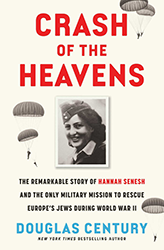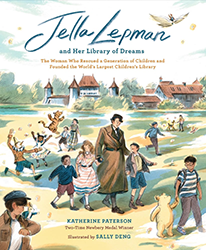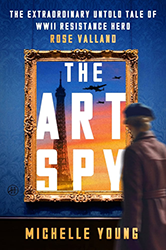Sarah Kaminsky provides a brilliant biography of an enormously complex, creative, and heroic individual: her father.
Based on Adolfo Kaminsky’s extensive answers to his daughter’s questions, Adolfo Kaminsky: A Forger’s Life was first published in French in 2009 and was subsequently released in many European languages before reaching English readers.
Adolfo Kaminsky’s remarkable journey was powered by intelligent longing and a deep, engaging sensitivity to personal destiny, Jewish peoplehood, and freedom. As a teenager, Adolfo (who wore many names in many roles) was fascinated by chemistry and technology. During the Nazi occupation of France, he became an important member of the Resistance movement — a collection of loosely linked organizations attempting to undermine Nazi domination and save lives in one way or another.
One important initiative of the Resistance was its provision of convincing identity documents that would fool authorities, which enabled many would-be victims of the Holocaust to avoid arrest (or worse) with these false papers and even cross the borders of Europe to freedom and safety. Adolfo became an essential player, managing to hide his own identity and activities while mastering the art of forgery. This art included the fabrication of authentic-seeming papers, inks, dyes, seals, solvents, and bindings of all kinds, as well as typography, signature forging, stain removal, and the production of rubber stamps. Adolfo invented solutions to technical problems and also developed skill as a photographer, which quickly proved itself another useful tool in his forgery career — and something he could use to support himself: though often starving, Adolfo took no money for his forgery efforts.
Almost always working under great pressure and never able to refuse to the mounting requests for hundreds and thousands of perfect documents to be produced on short notice, Adolfo sacrificed any kind of normal life to help save the lives of others. He was a man always in hiding, not only for himself but also the large body of supplies and equipment needed to carry on his work. Though he helped many concentration camp survivors make their way to Palestine, Adolfo,himself a member of the Haganah, did not take the opportunity, as he was disillusioned by policies of the emerging Jewish nation.
A second stage of his career as a master forger for freedom was his support of the Algerian War, supplying the FLN (National Liberation Front) with the documents needed by those fighting to overthrow French rule. Later, he performed similar services for liberation movements elsewhere in Europe, in Africa, and in South America.
Adolfo Kaminsky, born into a Jewish family and for most of his life holding a legitimate Argentinian passport, spent thirty years of his life on the edge of exposure and exhaustion. One strength of this book is the vivid portrayal of these conditions and heart-pounding emotions: the constant race against time, the strong sense of responsibility for making good on impossible promises to the many lives in Adolfo’s hands. Almost every episode of this biography has a thriller dimension that outshines even the best undercover fiction.
While Adolfo, as the book’s narrator, remains center-stage, the story is filled with dozens of courageous, intriguing characters, cogs in the wheels of freedom fighting. From them Adolfo learns that “the line between ‘resistance’ and ‘terrorism’ is sometimes very fine, difficult to feel.” This necessary book provides unforgettable insights into hidden worlds of the Jews, intellectuals, and partisans who fought back.
Acknowledgments, epilogue, notes, photographs by Adolfo Kaminsky, preface, prologue.
Philip K. Jason is professor emeritus of English at the United States Naval Academy. A former editor of Poet Lore, he is the author or editor of twenty books, including Acts and Shadows: The Vietnam War in American Literary Culture and Don’t Wave Goodbye: The Children’s Flight from Nazi Persecution to American Freedom.




